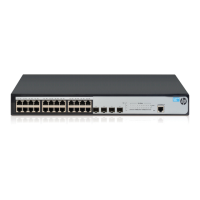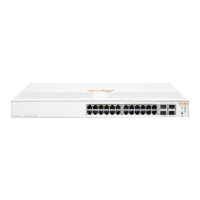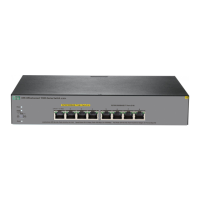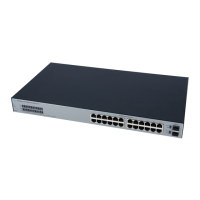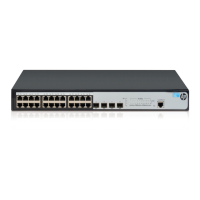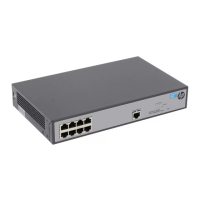357
Authentication status VLAN manipulation
No 802.1X user has
performed authentication
within 90 seconds after
802.1X is enabled
The device assigns the 802.1X guest VLAN to the port as the PVID. All 802.1X
users on this port can access only resources in the guest VLAN.
If no 802.1X guest VLAN is configured, the access device does not perform
any VLAN operation.
A user in the 802.1X guest
VLAN fails 802.1X
authentication
If an 802.1X Auth-Fail VLAN (see "Auth-Fail VLAN") is available, the device
assigns the Auth-Fail VLAN to the port as the PVID. All users on this port can
access only resources in the Auth-Fail VLAN.
If no Auth-Fail VLAN is configured, the PVID on the port is still the 802.1X
guest VLAN. All users on the port are in the guest VLAN.
A user in the 802.1X guest
VLAN passes 802.1X
authentication
• The device assigns the VLAN specified for the user to the port as the PVID,
and removes the port from the 802.1X guest VLAN. After the user logs off,
the user configured PVID restores.
• If the authentication server assigns no VLAN, the user-configured PVID
applies. The user and all subsequent 802.1X users are assigned to the
user-configured port VLAN. After the user logs off, the port VLAN remains
unchanged.
NOTE:
The network device assigns a hybrid port to an 802.1X guest VLAN as an untagged member.
Auth-Fail VLAN
You can configure an Auth-Fail VLAN to accommodate users that have failed 802.1X authentication
because of the failure to comply with the organization security strategy, such as using a wrong password.
Users in the Auth-Fail VLAN can access a limited set of network resources, such as a software server, to
download anti-virus software and system patches.
The Auth-Fail VLAN does not accommodate 802.1X users that have failed authentication for
authentication timeouts or network connection problems.
The network device supports Auth-Fail VLAN only on the port that performs port-based access control.
The Following describes the way how the network access device handles VLANs on such port.
Authentication status VLAN manipulation
A user fails 802.1X
authentication
The device assigns the Auth-Fail VLAN to the port as the PVID. All 802.1X
users on this port can access only resources in the Auth-Fail VLAN.
A user in the Auth-Fail VLAN
fails 802.1X re-authentication
The Auth-Fail VLAN is still the PVID on the port, and all 802.1X users on this
port are in this VLAN.
A user passes 802.1X
authentication
• The device assigns the VLAN specified for the user to the port as the PVID,
and removes the port from the Auth-Fail VLAN. After the user logs off, the
user-configured PVID restores.
• If the authentication server assigns no VLAN, the initial PVID applies. The
user and all subsequent 802.1X users are assigned to the user-configured
PVID. After the user logs off, the PVID remains unchanged.

